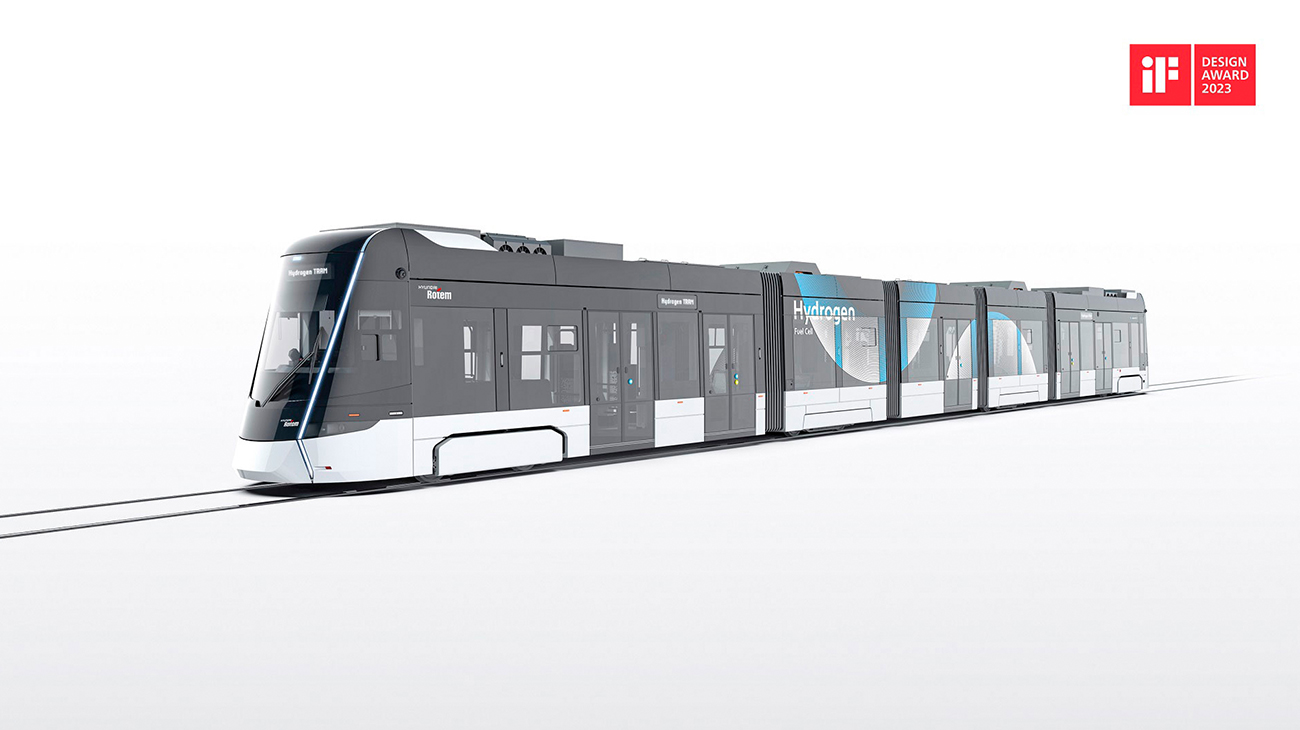
Every year, numerous companies and design studios across various fields, including industrial and architectural design, compete for these esteemed awards, seeking recognition for their design projects. Among these awards, the International Forum Design Award stands out as the most authoritative with a history spanning 70 years since its establishment in 1953. To select the best design, it evaluates a multitude of disciplines, such as product design, communication design, package design, service design and architectural design by taking into account aspects like design innovation, functionality, user experience, environmental sustainability and aesthetic value.
At the iF Design Award, which is considered a dream stage for the design community, Hyundai Rotem captured the top prize in the product category for the first time in Korean railway industry, and its capabilities and solutions for the era of eco-friendly mobility are acknowledged.
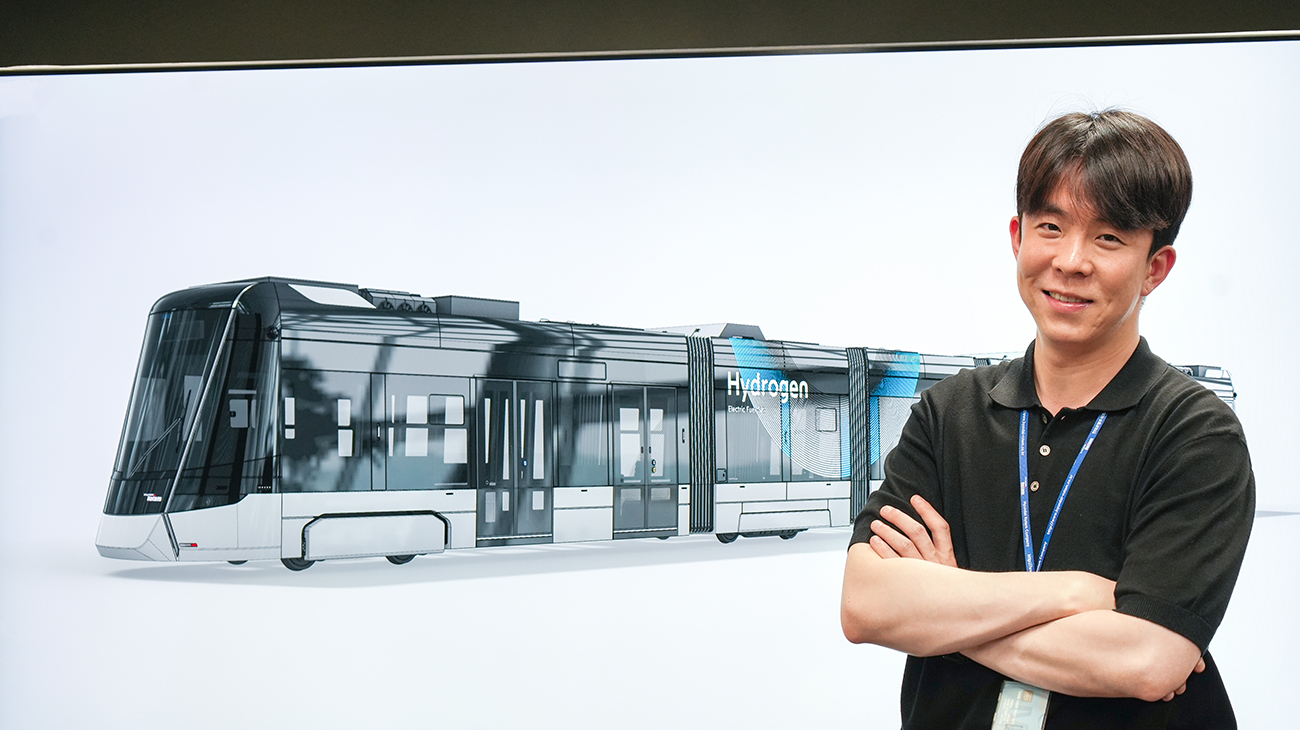
The Hyundai Rotem’s hydrogen fuel cell tram has garnered significant attention as a next generation eco-friendly power source in the mobility market by incorporating hydrogen into public rail transportation. The award-winning tram started as a demonstration project in 2021 run by the Ministry of Trade, Industry and Energy and final development is expected by the year’s end. We had the opportunity to speak with Nam Yoon-oh, a researcher responsible for its design to delve deeper into the design of this remarkable hydrogen fuel cell tram that emerged as a transportation mode that seamlessly blends into urban landscapes and is equipped with cutting-edge technology that harnesses next-generation power sources.
Hydrogen-Powered Mobility Expands to Rail
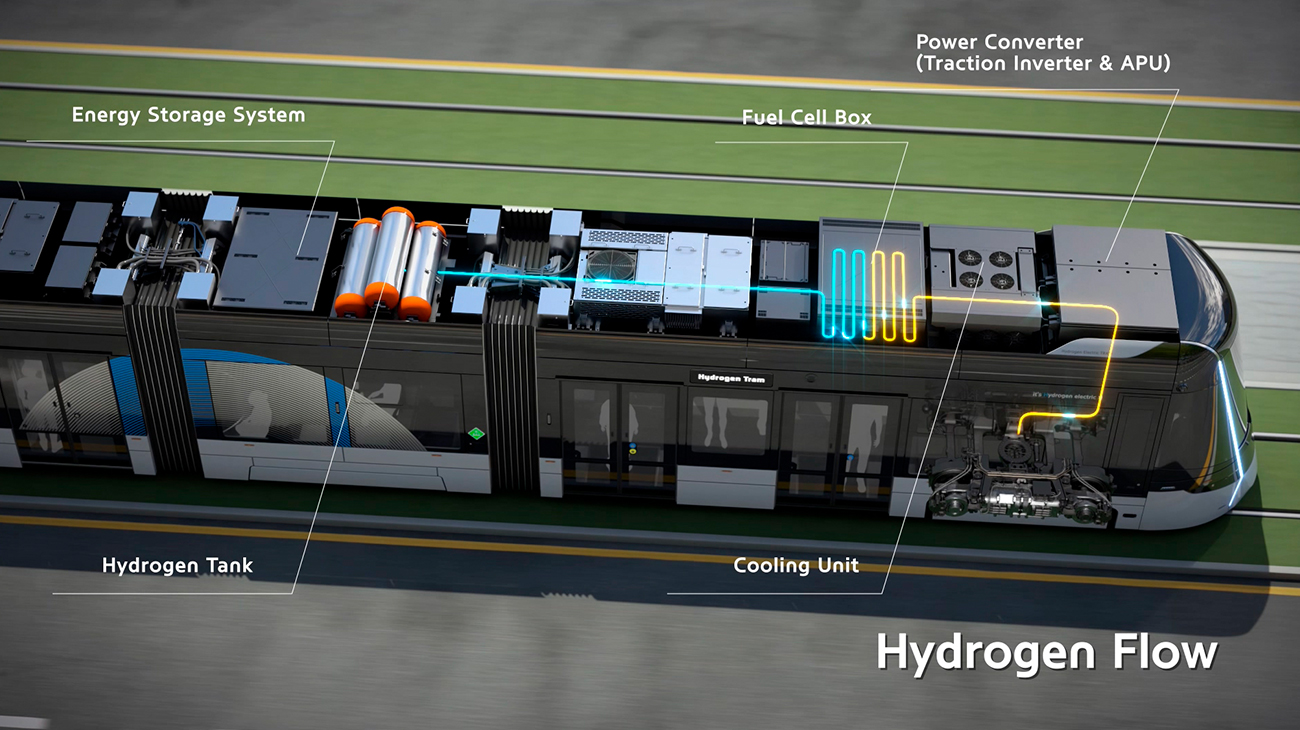
This win holds great significance in the point that originality of the tram that “runs on a hydrogen fuel cell.” Hydrogen fuel cells are the main electricity supply to the tram operations. Unlike conventional trams that rely on external power supply infrastructure through overhead wires, it is not only more environmentally friendly but also has the advantage of not spoiling the beauty of the cities. What’s more, compared to off-wire battery-powered trams, hydrogen fuel cell trams offer far superior advantages in charging time, battery capacity and battery production cost, positioning them as highly promising and valuable next-generation trams with immense potential.
Design that Meets the Uniqueness and Safety Requirements of Trams
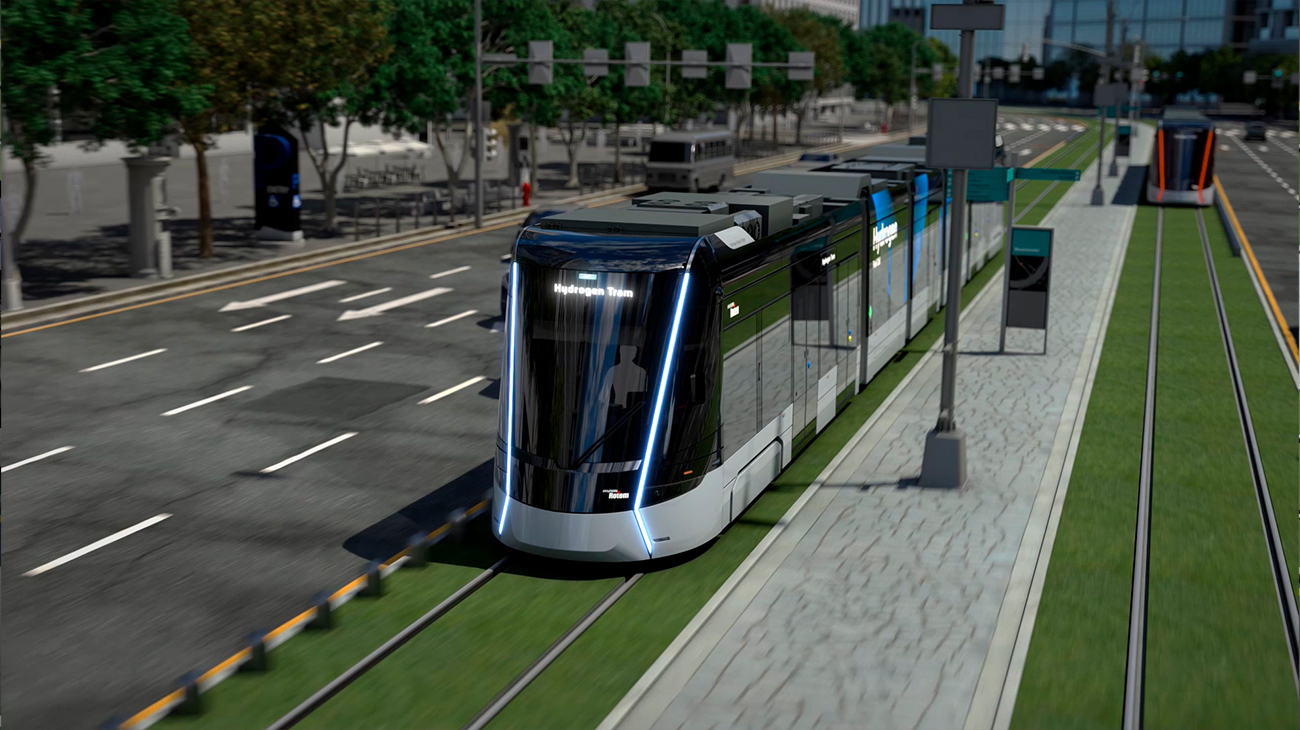
“Being able to coexist with cars and pedestrians on the road is what sets the hydrogen fuel cell trams apart from other modes of transportation. Some may assume that the design process must be similar to subways and trains due to their train-like appearance. However, this distinction brings about a significant difference in the design process,” explained researcher Nam. “It should be designed to have a safety net for potential accidents on the road and to minimize harm to both vehicles and pedestrians. Given that trams operate on the same road as other vehicles, they should be developed within the range of the traffic laws to protect vehicles and pedestrians.”
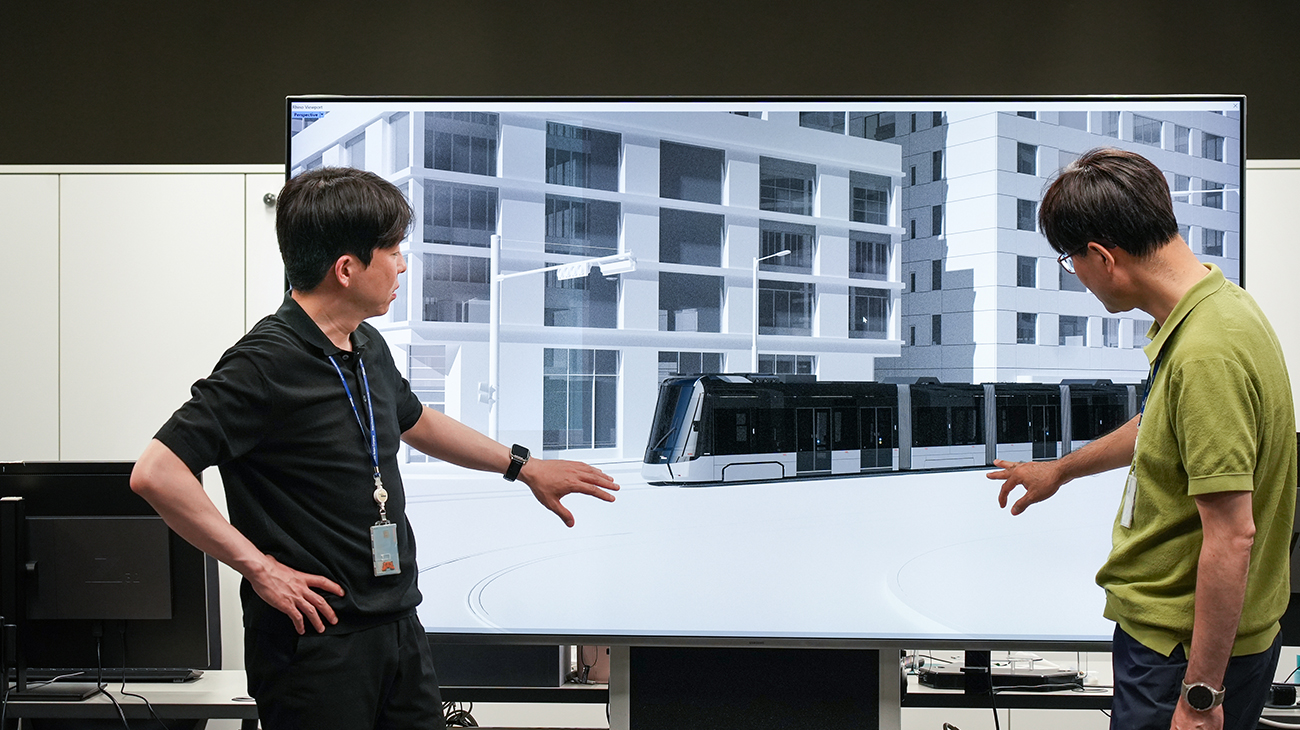
“In addition, another differentiation with trains is that they do not require separate facilities, such as ticketing booths, platforms or stations. Unlike conventional trains with complex boarding and alighting procedures, hydrogen fuel cell trams have relatively simpler steps, which in turn lead to relatively lower costs for building station facilities.”
Then, does it mean that there is no need to design additional facilities including platforms, making the design process much simpler and easier? Contrary to expectations, researcher Nam Yoon-oh points out that it introduces its own challenges and complexities. “Trains only travel a pre-defined routes such as railroad or tunnels so they have a limited number of variables to consider. On the other hand, trams, which share the road with various vehicles, including cars, trucks, bicycles and pedestrians, are more likely to get involved in traffic accidents with vehicles, as well as bicycles and pedestrians. This means there are so many aspects to consider in the design process.” said researcher Nam.
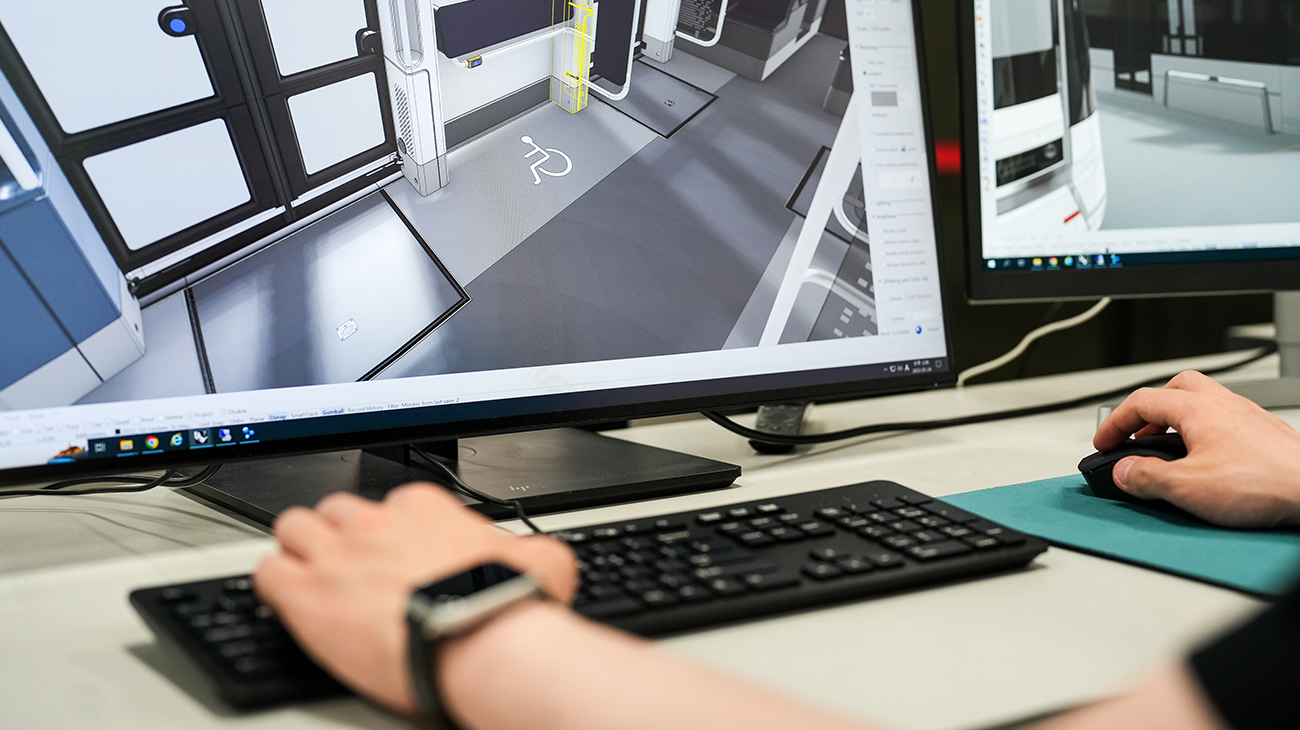
Besides, the design, which takes into account the unique characteristics of trams, displays multiple features. For instance, trams offer a bus-like boarding and alighting experience, simplifying the process for passengers. All four entrances are equipped with a ramp, elevating the entrance above the pavement to facilitate easy access for individuals with disabilities, including wheelchair users.
As trams focus on shorter journeys between stops, the interior design of trams consequently differs from that of conventional trains. It only takes 1-3 minutes to move between stops and passengers do not stay on a tram for a long time. Thus, instead of prioritizing extended periods of livability and comfort, the design emphasizes ease of boarding, movement within a crowded cart and efficient access to exits.
In addition, researcher Nam Yoon-oh highlighted the importance of ‘safety.’ “As for the interior space, we consider more than just livability. It is carefully designed for safety by taking into account numerous elements, including features for emergency escape in case of an accident. For instance, the interior space is embedded with various details for convenience and safety, such as the width of structures for wheelchair passengers so that they can freely and smoothly move even if one of the doors becomes damaged by an accident.”
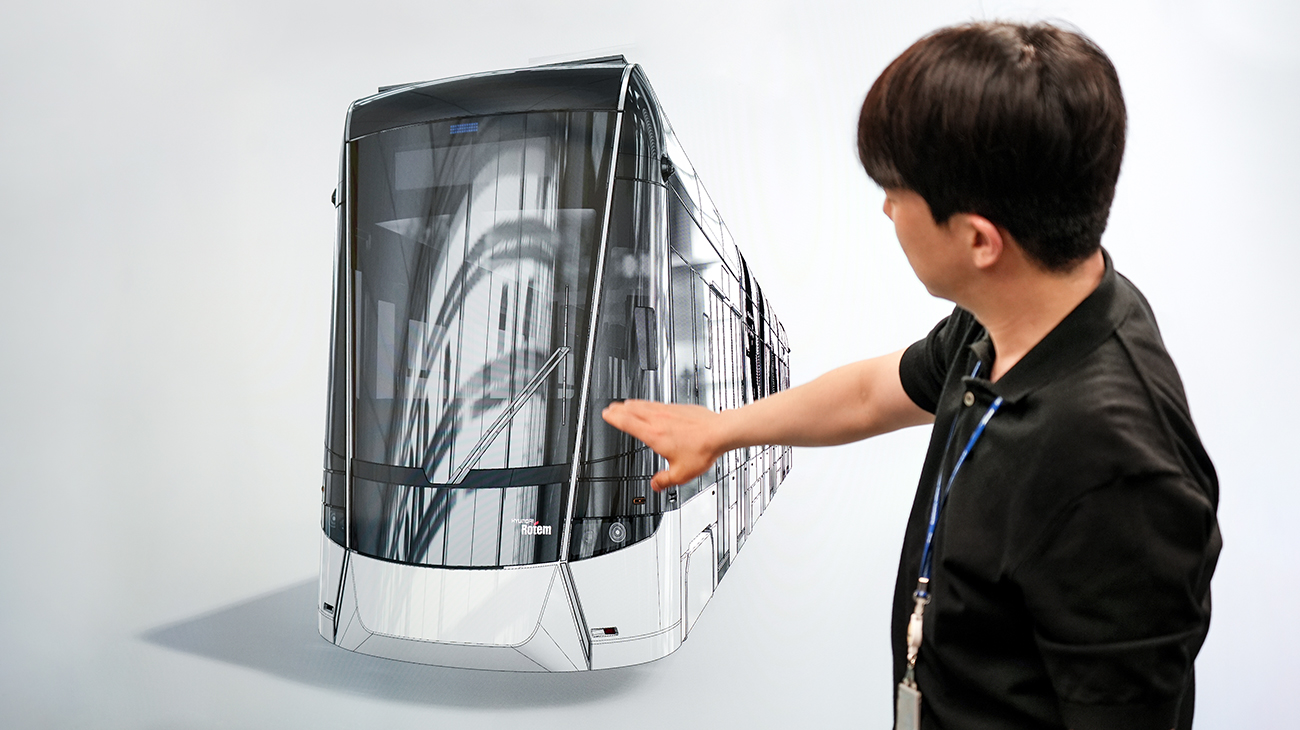
“The sleek front design serves a purpose beyond aesthetics, aiming to prevent potential collisions with pedestrians and minimize the risk of individuals being trapped underneath the trams. Details such as the grille are intentionally simplified to enhance both safety and visual appeal while mitigating potential hazards in the event of a collision.”
Hyundai Rotem’s Culmination of Expertise: A Result of Cross-Organizational Collaboration
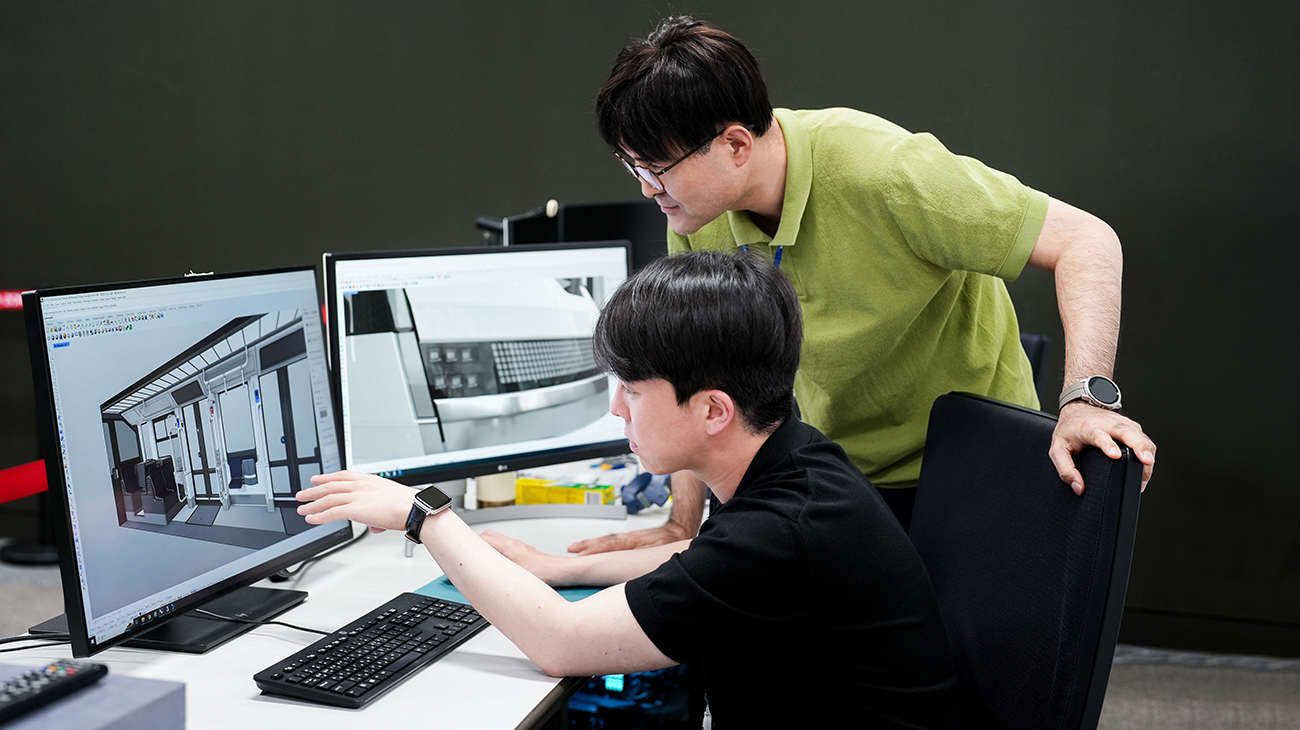
Many members across various departments within Hyundai Rotem contributed to the design process to fulfill various factors such as safety and convenience. With effective communication and cooperation among these collaborating departments, Hyundai Rotem successfully integrated its extensive engineering knowledge into the tram’s design.
Researcher Nam Yoon-oh emphasized that “it requires more than an individual designer’s capabilities to create a truly exceptional design. It is crucial to understand the distinctive characteristics and mechanical features of the object, in this case, the tram, to fuse them with creative design concepts. Throughout the design process, intensive discussions with engineering researchers were carried out. The designers, with their deep understanding of visual elements and user experience, complemented the engineers, who possessed strong mechanical expertise. Their collaboration was akin to fitting together puzzle pieces, with each individual’s unique abilities contributing to the overall success of the design. I think it was this collaborative effort that ultimately led to the prestigious award.”
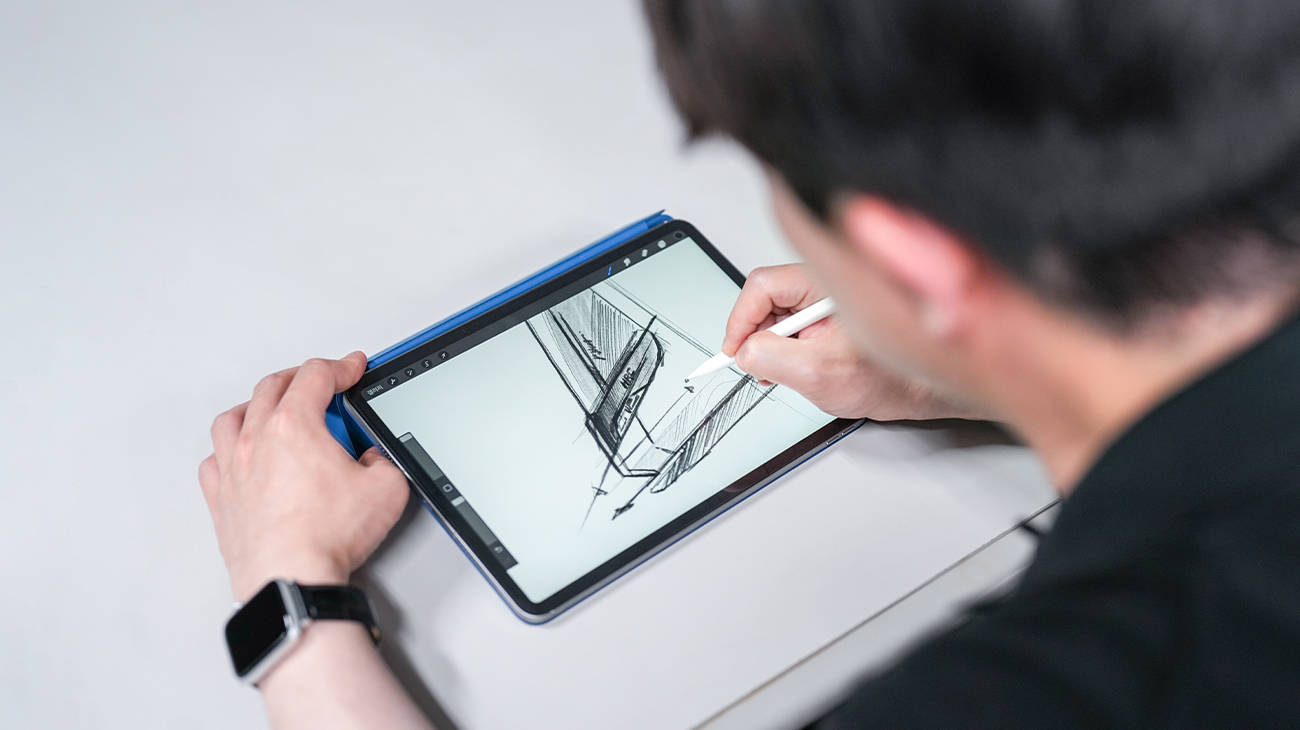
An additional benefit of working on the hydrogen fuel cell tram project was the opportunity to expand the design function through internal collaboration. Previously, design work was limited to conceptual stages. However, the hydrogen fuel cell tram demonstration project empowered the team to undertake the entire design process, from initial drafts to detailed design and even proto production, through internal collaboration.
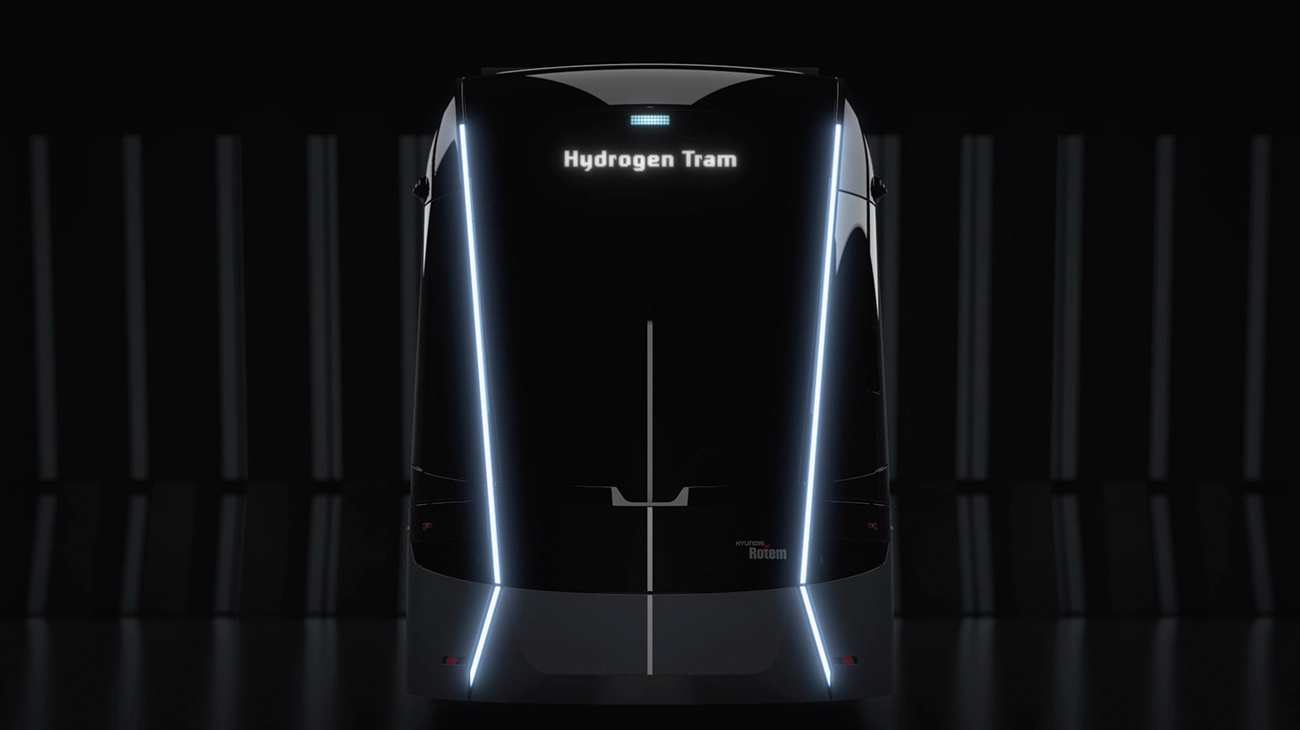
Researcher Nam Yoon-oh aimed to translate Hyundai Rotem’s engineering knowledge and the spirit of collaboration into the design itself. A notable testament to this effort is the front design of the hydrogen fuel cell tram. The captivating Daytime Running Lights (DRL) of the hydrogen fuel cell tram serve as a symbol of Hyundai Rotem’s commitment to infinite possibilities in hydrogen mobility. Beyond their visual appeal, these lights play a crucial role in enhancing the tram’s presence on the road. They enable drivers and pedestrians to easily identify the vehicle’s location, even from a distance or in low-light conditions.
Hyundai Rotem will unveil its dedication to combining engineering prowess with innovative design concepts, the hydrogen fuel cell tram, to the public in June at the 2023 Korea Railways and Logistics Fair at BEXCO in Busan. Following its public unveiling, the tram will enter actual operations in Ulsan through mass production. Let us eagerly await the positive impact that these innovative trams will bring, as they contribute to a greener and more efficient urban environment.
